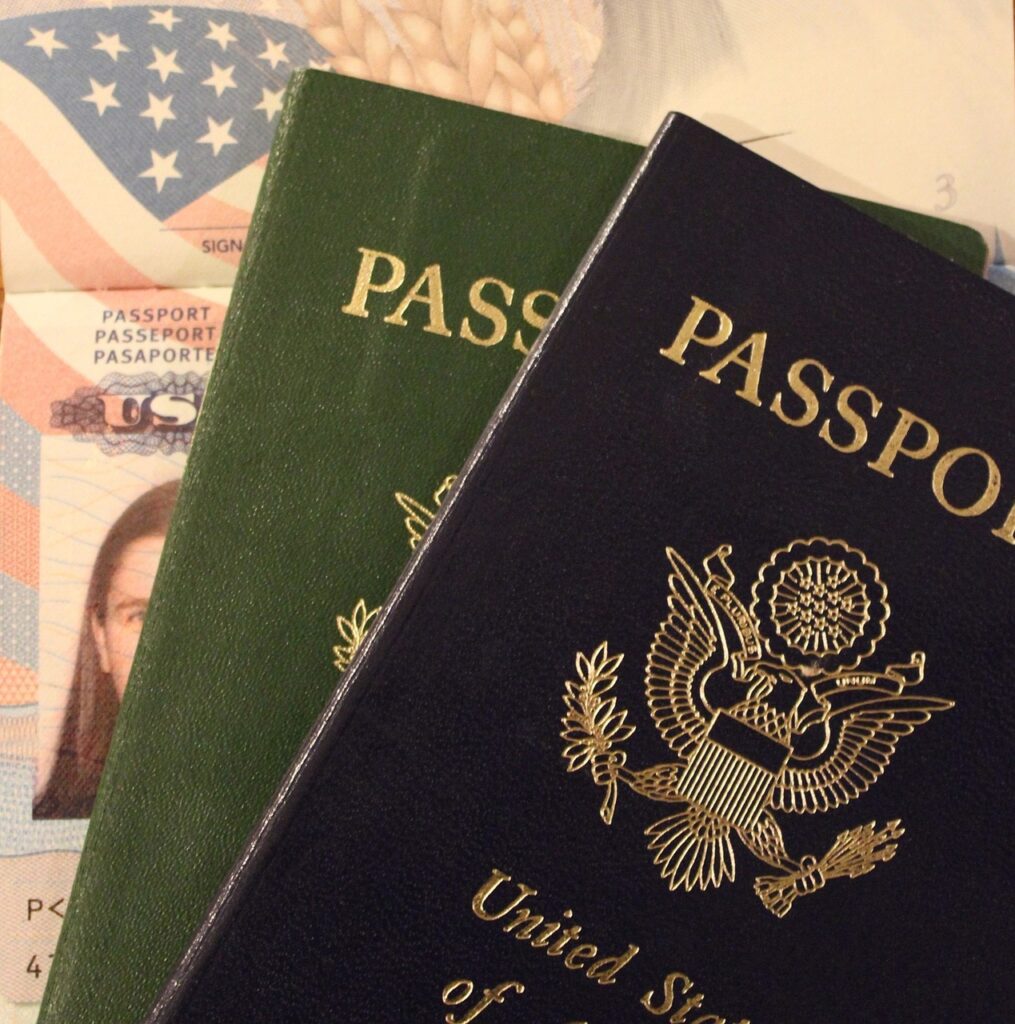Visa Guide
Do You Need A Visa To Go To Canada If You Are A U.S. Resident?
Traveling to Canada as a U.S. resident? Find out if you need a visa in this informative article. Understand the requirements for a smooth entry into Canada. #CanadaVisa #USResident
Heading to Canada for a visit? If you’re a U.S. resident, you may be wondering if a visa is required for your trip. Well, fret not! In this article, we’ll unravel the mystery and provide you with all the information you need. So, lean back and let’s dive into the world of Canadian travel requirements for U.S. residents.
Visiting Canada as a U.S. Resident
Visiting Canada as a U.S. resident can be an exciting experience. As neighbors, Canada and the United States share a unique and friendly relationship that makes travel between the two countries relatively hassle-free. However, it is important to understand and comply with the specific travel requirements set by the Canadian government to ensure a smooth entry into Canada. In this article, we will provide you with a comprehensive guide on the Canada-U.S. relationship, specific travel requirements for U.S. residents, and how to determine if you need a visa.
Understanding the Canada-U.S. Relationship
The Canada-U.S. relationship is often described as one of the closest and most extensive in the world. As both countries share the longest undefended border, cooperation and open trade have been the foundation of their relationship for many years. This close partnership has a significant impact on travel requirements for U.S. residents visiting Canada.


This image is property of pixabay.com.
Specific Travel Requirements for U.S. Residents
While traveling to Canada as a U.S. resident, there are specific travel requirements that you need to fulfill. These requirements are in place to ensure security and manage the flow of travelers across the border. The main travel requirements for U.S. residents include a valid passport and an Electronic Travel Authorization (eTA).
⚠️ Beware of Jobs and VISA Scams – Read our guides carefully and APPLY directly using our links and buttons. Application is free! Don’t pay anyone claiming to be a travel or Job Agent!
Valid Passport
A valid passport is a must when visiting Canada as a U.S. resident. Ensure that your passport is valid for the duration of your visit as well as six months beyond your intended departure date from Canada.
Electronic Travel Authorization (eTA)
The Electronic Travel Authorization (eTA) is a mandatory requirement for visa-exempt foreign nationals, including U.S. residents, traveling to Canada by air. It is an entry requirement that determines whether you are admissible to travel to Canada without a visa. The eTA is linked electronically to your passport and is valid for up to five years or the validity of your passport, whichever comes first.
Applying for an eTA
To apply for an eTA, you need to provide personal information, such as your name, date of birth, and passport details, as well as answer a few eligibility questions. The application process can be completed online and usually takes just a few minutes. It is advisable to apply for your eTA well in advance of your planned trip to avoid any last-minute complications.
Exceptions to eTA Requirements
There are certain exceptions to the eTA requirement for U.S. residents. If you are traveling to Canada by land or sea, you do not need an eTA. Additionally, if you hold a valid Canadian visa, you are exempt from the eTA requirement. It is essential to review and understand these exceptions to ensure a smooth entry into Canada.
Determine if You Need a Visa
While an eTA fulfills the travel requirements for most U.S. residents visiting Canada, there are specific cases where a visitor visa, also known as a Temporary Resident Visa (TRV), may be required.
Visitor Visa
A visitor visa is required for travelers who are not eligible for an eTA. It is issued for a single entry or multiple entries and allows individuals to stay in Canada for a specified duration, typically up to six months. If you are planning a visit to Canada for tourism, family visits, business meetings, or attending conferences, a visitor visa may be necessary.
Temporary Resident Visa (TRV)
The Temporary Resident Visa (TRV) is the official name for a visitor visa. It is typically valid for six months and allows entry into Canada for specific purposes, as mentioned earlier. The TRV differs from an eTA in that it is physically stamped or affixed to your passport, while the eTA is electronically linked.
Exemptions from Visa Requirements
Some individuals may be exempt from requiring a visitor visa for entry into Canada. This exemption applies to citizens of visa-exempt countries, dual citizens, and U.S. permanent residents (Green Card holders). It is important to note that even if you are exempt from a visitor visa, you may still require an eTA to enter Canada by air.
Applying for a Visitor Visa
To apply for a visitor visa, you must complete the application form, provide necessary supporting documents, and pay the applicable fees. The application process can be completed online or in person at the nearest Canadian Visa Application Centre (CVAC). It is advisable to apply well in advance of your planned visit to allow for processing times.

This image is property of pixabay.com.
Visitor Visa
If you are required to obtain a visitor visa to visit Canada, it is essential to understand the definition, eligibility criteria, application process, processing times, and associated costs.
Definition
A visitor visa is a travel document issued by the Canadian government that allows foreign nationals to enter Canada temporarily for specific purposes, such as tourism, visiting family or friends, attending business meetings, or participating in conferences.
Eligibility Criteria
To be eligible for a visitor visa, you must demonstrate that you intend to leave Canada at the end of your authorized stay. You must also provide evidence of sufficient funds to support yourself during your visit, have a valid travel document (passport), have no criminal record, and not pose a security risk to Canada.
Application Process
The application process for a visitor visa involves completing the appropriate application form, providing supporting documents (such as proof of ties to your home country, travel itinerary, and proof of funds), and paying the necessary fees. The application will be reviewed by the Canadian authorities, who may request additional documents or schedule an interview if necessary.
Processing Times
Processing times for visitor visas can vary based on the volume of applications. It is advisable to apply well in advance of your intended travel date to allow for sufficient processing time. You can check the current processing times on the official Canadian government website.
Cost and Fees
There are associated costs and fees when applying for a visitor visa. The fees may vary depending on factors such as the length of stay and the number of entries requested. It is important to check the official government website for the most up-to-date fee information.
Temporary Resident Visa (TRV)
A Temporary Resident Visa (TRV), also known as a visitor visa, is required for individuals who do not qualify for an eTA and need to travel to Canada for specific purposes.
Definition
A Temporary Resident Visa (TRV) is a travel document issued by the Canadian government that allows foreign nationals to enter Canada temporarily, similar to a visitor visa.
Eligibility Criteria
The eligibility criteria for a Temporary Resident Visa (TRV) are similar to those for a visitor visa. You must demonstrate that you will leave Canada at the end of your authorized stay, have sufficient funds to support yourself, hold a valid travel document (passport), have no criminal record, and not pose a security risk to Canada.
Application Process
The application process for a Temporary Resident Visa (TRV) involves completing the appropriate application form, providing supporting documents, and paying the necessary fees. The application will be reviewed by the Canadian authorities, who may request additional documents or schedule an interview if needed.
Processing Times
The processing times for Temporary Resident Visas can vary based on the volume of applications. It is advisable to apply well in advance to allow for sufficient processing time. You can check the current processing times on the official Canadian government website.
Cost and Fees
There are associated costs and fees when applying for a Temporary Resident Visa. Similar to visitor visas, the fees may vary depending on factors such as the length of stay and the number of entries requested. It is important to check the official government website for the most up-to-date fee information.

This image is property of pixabay.com.
Exemptions from Visa Requirements
While most U.S. residents require an eTA or visitor visa to enter Canada, there are specific situations in which individuals may be exempt from visa requirements.
Visa-Exempt Countries
Citizens of visa-exempt countries do not require a visitor visa or eTA to enter Canada. These individuals allowed to enter Canada with just a valid passport issued by their country of citizenship. It is important to verify whether your country of citizenship falls under the visa-exempt category.
Dual Citizens
Dual citizens, who hold both Canadian citizenship and U.S. citizenship, are exempt from visa requirements when entering Canada. However, it is advisable to carry both passports when traveling to ensure a smooth entry process.
U.S. Permanent Residents (Green Card Holders)
U.S. permanent residents, often known as Green Card holders, are exempt from visa requirements when visiting Canada. However, they may still need to obtain an eTA depending on their means of travel (by air) and citizenship.
Applying for a Visitor Visa
If you determine that you need a visitor visa to enter Canada, it is essential to understand the application process and requirements.
Document Requirements
When applying for a visitor visa, you will need to provide various documents, including your passport, proof of ties to your home country (such as employment, property ownership, or family), travel itinerary, proof of funds to cover your expenses, and a letter of invitation if applicable.
Online Application
You can apply for a visitor visa online through the official Canadian government website. The online application allows you to submit your documents electronically and pay the necessary fees online. You will also receive updates on the status of your application through the online portal.
In-Person Application
In some cases, you may have to submit your visitor visa application in person at the nearest Canadian Visa Application Centre (CVAC). This allows you to provide any additional documents requested by the Canadian authorities and clarify any concerns they may have regarding your application.
Processing Times
The processing times for visitor visas can vary based on the volume of applications. It is advisable to apply well in advance of your intended travel date to allow for sufficient processing time. You can check the current processing times on the official Canadian government website.
Cost and Fees
There are associated costs and fees when applying for a visitor visa. The fees may vary depending on factors such as the length of stay and the number of entries requested. It is important to check the official government website for the most up-to-date fee information.
Steps to Ensure a Smooth Entry into Canada
To ensure a smooth entry into Canada as a U.S. resident, here are some steps you should follow:
Prepare Your Travel Documents
Ensure that you have all the necessary travel documents, including a valid passport, eTA (if required), and any supporting documents relevant to your visit, such as a letter of invitation.
Understand the Entry Process
Familiarize yourself with the entry process and the specific requirements set by the Canadian authorities. This will help you navigate the immigration process smoothly and avoid any delays or complications.
Be Honest and Cooperate
When interacting with Canadian immigration officials, be honest and provide accurate information. Cooperate with the authorities and follow their instructions to ensure a hassle-free entry.
Additional Tips for a Hassle-Free Entry
To make your entry into Canada even smoother, consider the following tips:
- Familiarize yourself with Canadian customs and regulations to avoid any prohibited items or activities.
- Ensure that you have sufficient funds to cover your expenses during your visit.
- Research and plan your itinerary in advance to make the most of your time in Canada.
- Obtain comprehensive travel insurance to protect yourself against any unforeseen circumstances.
- Stay updated on any travel advisories or restrictions that may affect your visit.
Conclusion
Visiting Canada as a U.S. resident can be an enriching experience. By understanding the specific travel requirements and visa regulations that apply to U.S. residents, you can ensure a smooth entry into Canada. Whether you need an Electronic Travel Authorization (eTA), a visitor visa, or are exempt from visa requirements, it is important to plan your trip in advance and comply with all the necessary procedures. Start preparing your travel documents, research the entry process, and make sure you meet all the eligibility criteria. By following these steps, you will be well-prepared to visit the beautiful land of Canada.
Disclosure: Our content is reader-supported. If you click certain links, we may earn a commission. Learn more about our funding and editorial process.

